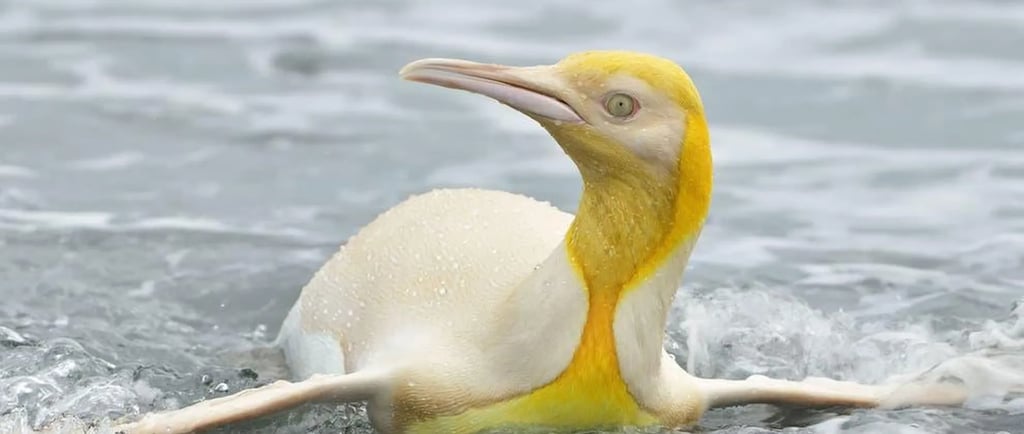The Golden Penguin: A Study of Leucism in Avian Species


Introduction to Leucism in Birds
Among the fascinating phenomena in the avian world, leucism stands out due to its unique impact on bird plumage. This genetic condition, resulting in partial albinism, leads to a striking alteration in the appearance of various species. One of the most extraordinary subjects to arise from this genetic anomaly is the rare golden penguin, a captivating example of how leucism can influence avian coloration.
The Golden Penguin and Its Unique Features
The golden penguin, characterized by the unusual golden-hued feathers on parts of its body, is a remarkable genetic mutation within the penguin family. Unlike typical penguins, which exhibit the standard black-and-white plumage, these rare birds possess a golden sheen that captivates ornithologists and birdwatchers alike. This alteration in color is not merely aesthetic but also serves as an intriguing topic for scientific inquiry regarding the implications of leucism.
Understanding the Genetic Basis of Leucism
Leucism occurs due to a genetic mutation affecting the melanin production in birds, which significantly alters the pigmentation in their plumage. In the case of the golden penguin, this condition results in parts of its feathers exhibiting a lighter coloration, creating a breathtaking appearance that distinguishes it from its peers. The rarity of such a mutation draws attention to the importance of genetic diversity and the potential ecological repercussions that accompany changes in animal colors.
This golden coloration can affect not only the penguin's visibility and mate selection but may also alter its survival strategies in the wild, leading researchers to speculate about the broader ecological impacts of leucism on population dynamics.
The Thrill of Discovery and Conservation Efforts
As rare sightings of the golden penguin become increasingly documented, they symbolize not only the wonders of nature but also the vital need for conservation efforts. The study of these unique birds helps illuminate the role of genetic diversity in the health of avian populations, emphasizing the necessity for habitat protection and sustainable practices. Bird enthusiasts and conservationists alike must unite to ensure that such rare genetic occurrences continue to be part of our natural world.
In conclusion, the rare golden penguin serves as a captivating testament to the marvels of evolutionary processes and genetic variation. By delving into the characteristics of leucism, particularly as observed in these stunning birds, we foster a greater appreciation for biodiversity and the importance of preserving these incredible creatures for future generations to marvel at.
